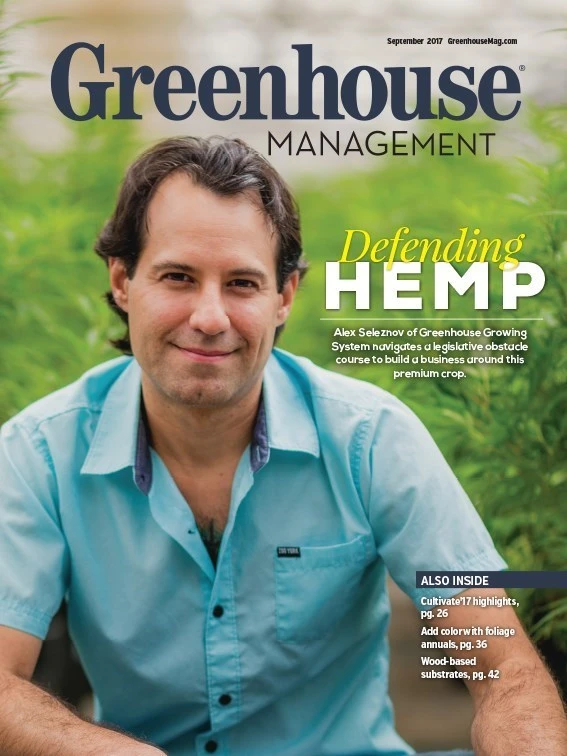
For many growers, bare root starting materials can speed up the production process, says Paul Pilon, owner of Perennial Solutions Consulting. While liners have to size up and mature, bare roots have had about a year of growth in the field and can more quickly provide growers with full plants that Paul says are “healthy” and “vigorous.”
Located in Michigan, Pilon says he isn’t far from Walters Gardens — the largest wholesale grower of bare root perennials in the United States — and he often visits the grower’s genetic trials. He has also written articles for the business, on topics such as cultural practices, although he isn’t a client or customer. In his experience working with growers, Pilon says he makes recommendations for vendor-specific products, and he often puts Walters Gardens high on his recommendation lists of bare root suppliers.
Growers usually plant bare root plants in spring, sometime between late February and late May, Pilon says. There is also a short window around mid-September in which growers will plant bare roots to establish and overwinter them. “Some of that is for logistics, [to] spread out the labor,” he says.
A few of the well-performing bare root products from Walters Gardens that are typically spring-planted include perovskia, salvia and sedums, Pilon says. “There are several that have been very reliable,” he says. “I would say the majority of — I’m going to call them A-Z perennials — are spring-planted and some of your ‘bread and butter,’ if you will. Daylilies, most astilbes — a lot of growers like to fall-plant those.”

Walters Gardens stands behind its product and has a diverse offering of bare root sizes that can accommodate growers’ needs depending on specific pot sizes or what time of year they want to grow, Pilon says. “If somebody wants a little bit smaller bare root, they can have Walters cut certain perennials to whatever specification they want,” he says.
When growing bare root plants, growers can look to a variety of types of growing media such as peat or bark-based media, Pilon says. Any media used for bare root should have air and drainage, and growers should avoid particularly wet mixes. “Make sure there’s good contact between the root and the soil,” he says. “If there’s air pockets in there, that’s going to lead to some potential desiccation and drying out.”
Growers who handle plugs might find it challenging to plant bare root in some situations because of how their production lines are set up, Pilon says. “But again, the outcome is, you can get a finished plant quicker without pinches,” he says. “The reward is usually greater than the cost.”

Explore the September 2017 Issue
Check out more from this issue and find your next story to read.
Latest from Greenhouse Management
- Anthura acquires Bromelia assets from Corn. Bak in Netherlands
- Top 10 stories for National Poinsettia Day
- Langendoen Mechanical hosts open house to showcase new greenhouse build
- Conor Foy joins EHR's national sales team
- Pantone announces its 2026 Color of the Year
- Syngenta granted federal registration for Trefinti nematicide/fungicide in ornamental market
- A legacy of influence
- HILA 2025 video highlights: John Gaydos of Proven Winners





